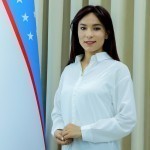Uzbekistan's spenditure on the New Year holiday
Review
−
14 January 9421 10 minutes
The New Year has passed, and the festive mood might have already faded. But before you let go of that holiday spirit, let’s take a look at how much was spent on the holiday by the state. Was it 500,000 sums? 1 million? Maybe even 2 million? Let's take a closer look at the expenses, starting with the state.
As of 2025, Uzbekistan's state debt is approaching $38 million, and the budget deficit has already surpassed $52 million. So, how much did the government spend on celebrating the New Year with towering fir trees, dazzling lights, and a parade of Santa Clauses? QALAMPIR.UZ has gathered and calculated the holiday-related expenses from open data. Let’s break it down for you:
Jizzakh Region
Let’s begin by examining the spending in Jizzakh region. The former governor of the region, Ergash Saliyev, allocated 860 million sums just for the city of Jizzakh to prepare for the New Year celebration, install and decorate the "New Year's tree," and decorate central streets, alleys, and parks.
"The Main Department of Economy and Finance of the region (A. Mustanov) was tasked with transferring 860 million sums from the regional budget's reserve fund to the city’s local budget to install and decorate the 'New Year's tree' on Mustakillik Square in Jizzakh, as well as to decorate the central streets, alleys, and parks for the holiday."
So, a fir tree for 860 million sums — how does that sound?
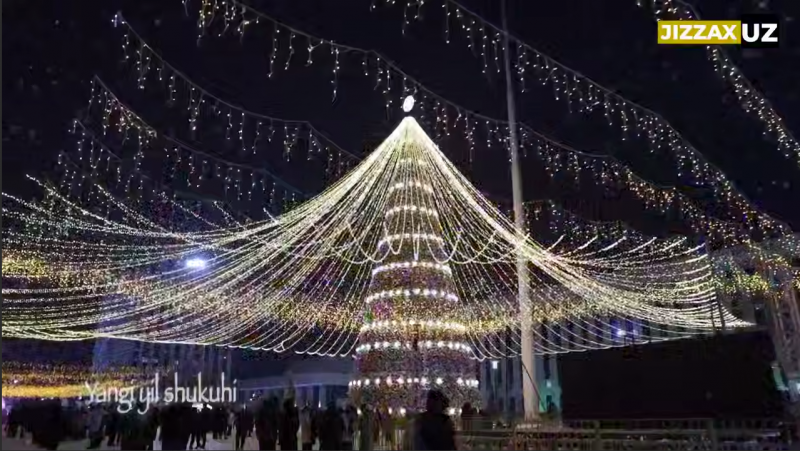
However, this amount wasn’t just for Jizzakh city. Each district in the region received separate funding for the New Year celebrations. For instance:
- Mirzachul district spent 50 million sums on the "New Year's tree" and street decorations.
- Pakhtakor district spent 33 million sums.
- Bakhmal district spent 50 million sums.
Other districts in Jizzakh also allocated similar sums.
But that’s not all — there were also holiday bonuses. The Jizzakh regional administration set aside a total of 501 million sums as bonuses for employees of the regional administration, the Secretariat of the Jizzakh Regional Council of People’s Deputies, and the regional "Official Reception House" for the New Year festivities. Additionally, the Sharof Rashidov district administration awarded 25 million sums to four employees in celebration of the holiday.
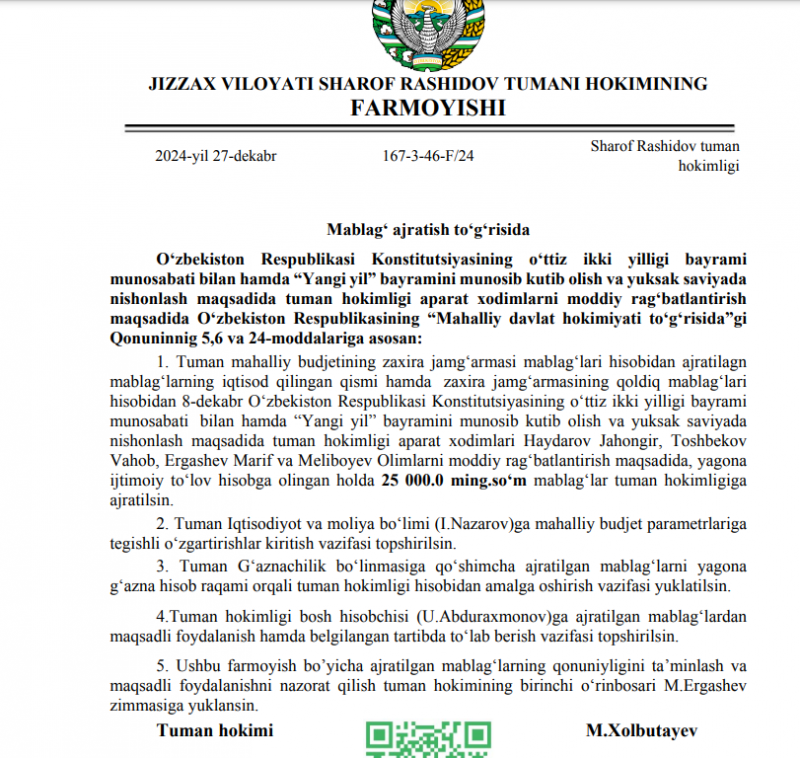
The resolution, signed by the Chairman of the Jizzakh Regional Council of People’s Deputies, Parda Shukurov, states that the funds were allocated from the free balance of the local budget, the overfulfilled part of the revenue plan, and loan funds granted to the regional budget.
In short, the deputies rewarded themselves under the guise of the holiday at the expense of state funds.
It’s no surprise that the deputies in Jizzakh treated themselves generously. The mayor of Jizzakh, Kholmurodov, allocated 16 million 250 thousand sums from the local budget’s reserve fund to employees of the city’s Economy and Finance Department. Of this, 8 million sums were designated as a holiday bonus for the department's employees.
Surkhandarya Region
Surkhandarya region also stands out for its hefty New Year expenses. According to an order from the Governor of Surkhandarya, Ulugbek Kasimov, dated December 17, 2024, the regional Department of Economy and Finance allocated 554 million 870 thousand sums from the reserve fund of the regional budget to the Department of Culture for the New Year celebrations. While this sum might seem large, it wasn’t enough for the region. Consequently, each district and city began pulling from their own local budgets for New Year’s festivities.
For example, in the city of Termez, the Department of Culture allocated 120 million sums to cover the expenses of decorating an artistic stage located near the "Bolajon" park. This money came from the proceeds of land sales via an electronic trading platform. The allocation was intended to ensure that the upcoming New Year’s events in the city would be of a high standard, according to the signature of Termez City Mayor Turayov.
And here’s the fir tree decorated with that money:
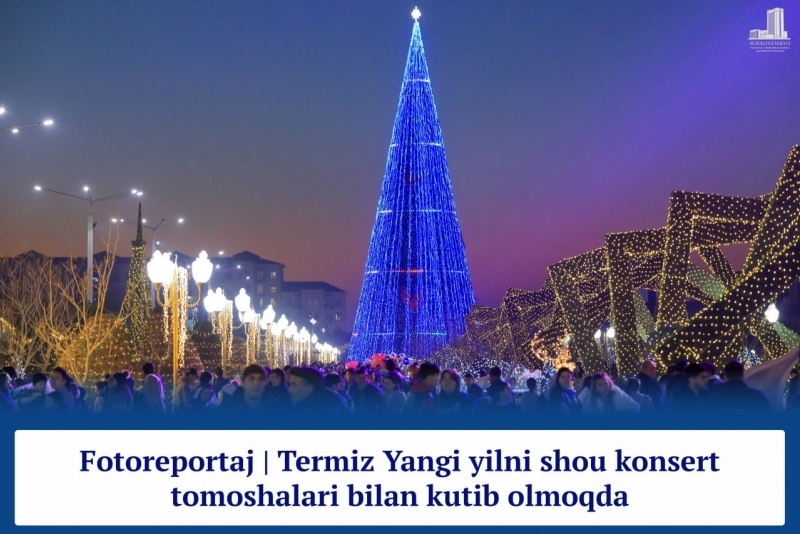
Moreover, the Kyzyryk district mayor of Surkhandarya allocated an additional 30 million sums from the district's reserve fund to purchase fir tree decorations and cover other costs related to the New Year celebrations. So, in addition to the approximately 600 million sums allocated by the regional governor specifically for the New Year, each district and city spent even more money recklessly.
3. Fergana Region
Fergana region also stands out for its significant New Year expenditures. The regional administration allocated 210 million sums for preparations related to the "Presidential Christmas Tree" program. Additionally, 100 million sums were spent on the installation and decoration of the "New Year" Christmas tree in the "New Uzbekistan" area of Fergana city. And here’s the Christmas tree, worth 100 million sums.
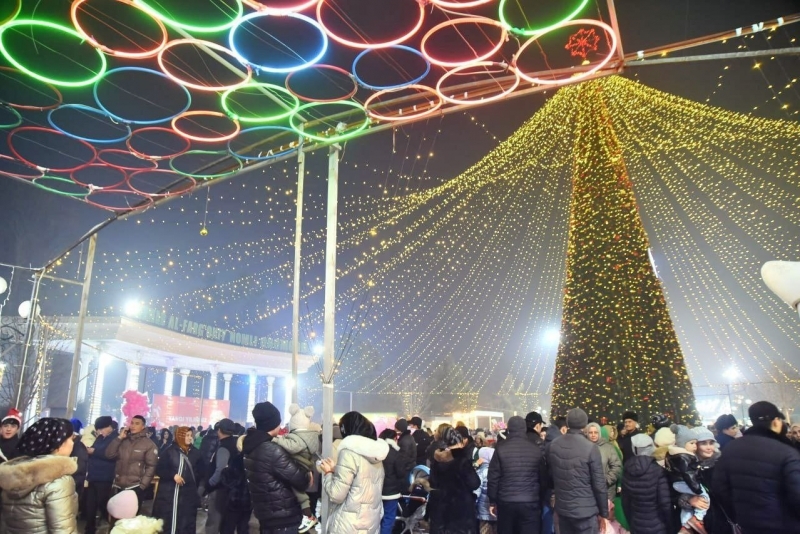
Moreover, Furqat district of Fergana spent 28 million 322 thousand sums on decorating the 2025 Christmas tree in the district center for the New Year. Similarly, Uchkuprik district allocated 20 million sums for the same purpose. Rishton district, a smaller area in Fergana, allocated a total of 73 million 800 thousand sums in prize money from unused local budget funds. It’s quite evident that the funds available in the budget of Uzbekistan are not being used efficiently.
4. Bukhara Region
What’s happening in Bukhara? While there is no clear breakdown for the entire region, it’s evident from the expenses of some districts that Bukhara has likely spent close to a billion sums on New Year festivities.
For instance, the Karakul district of Bukhara allocated 150 million sums for decorating the central streets and preparing the area for the festive event to welcome the New Year with joy and cheer.
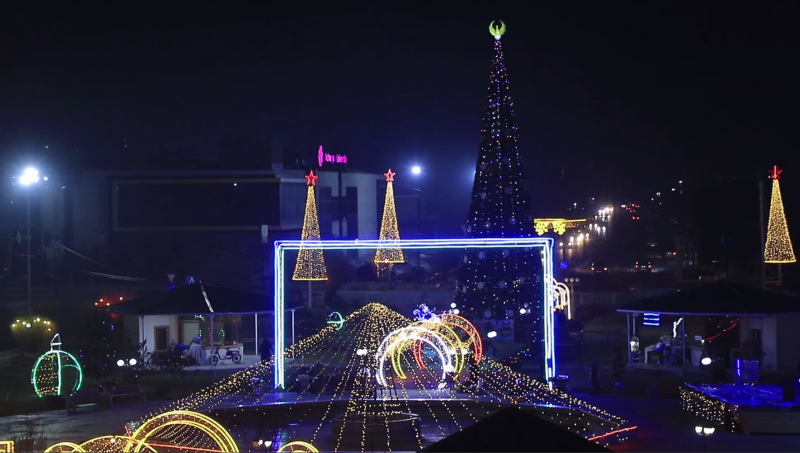
The Kogon district spent 70 million sums on decoration and gifts, the Olot district allocated 45 million sums, and the Romitan district set aside 50 million sums for similar purposes.
5. Navoi Region
In Navoi, the regional khokimiyat focused its New Year spending primarily on rewarding its employees. On January 1, a one-time salary bonus was provided to workers in various government sectors, including the Department of Economic Affairs, the Secretariat of the Regional Council of People's Deputies, and People's Reception Centers of the President in Navoi. While the total amount isn't specified, such bonuses can be substantial.
In addition to the bonuses, Navoi city erected a 29-meter Christmas tree, decorated with 360 ball ornaments and more than 1,000 LED lights. This festive display cost an estimated 560 million sums. Districts within the region also contributed to the New Year’s expenses:
- Kyzyltepa district: 303 million sums
- Zarafshon city: 11 million sums
- Konimekh district: 43 million sums
- Navbahor district: 20 million sums
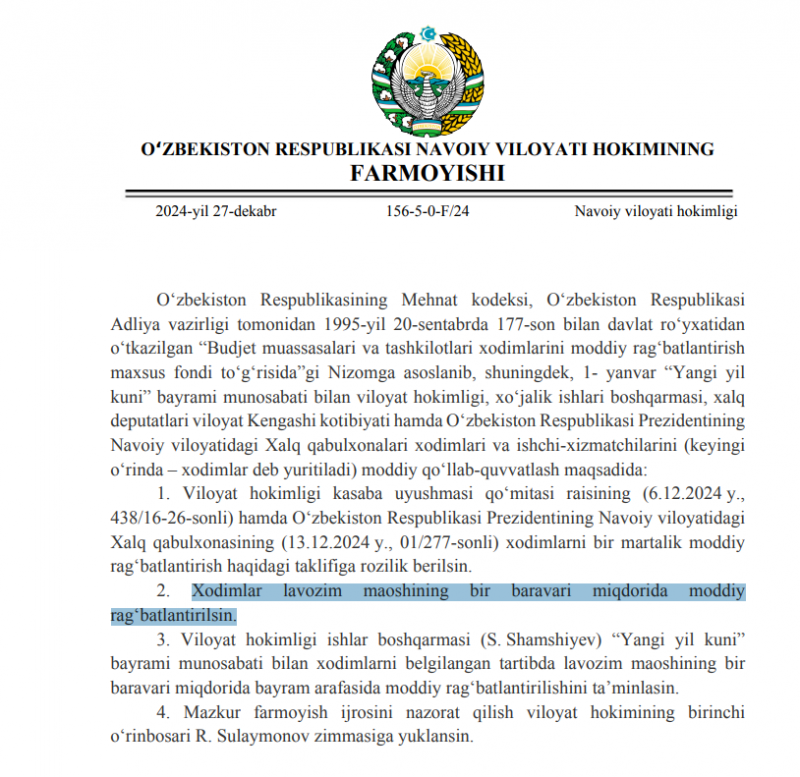
While other districts were focusing on large decorations, the Tomdi district stood out for its expenditure of just 3 million 200 thousand sums to buy New Year’s gifts for 28 real orphans.
6. Samarkand Region
In Samarkand, the New Year festivities included significant bonuses and decorations. For example, the Payariq district spent 52 million 442 thousand sums on food for its employees. Several other districts also had notable expenses for the holiday:
- Samarkand district: 120 million sums
- Narpay district: 55 million sums
- Bulungur district: 50 million sums
- Jomboy district: 25 million sums
Additionally, the Samarkand regional government allocated 246 million sums to purchase 15 Santa Claus and 15 Snow Maiden costumes. The district governors in Urgut district also received substantial bonuses, with each deputy district governor receiving about 4 million sums for the New Year.
7. Karakalpakstan
In Karakalpakstan, the New Year holiday expenses were similarly large. The modest fir tree in the city of Nukus cost 100 million sums, as detailed in the decree of the Nukus city governor.
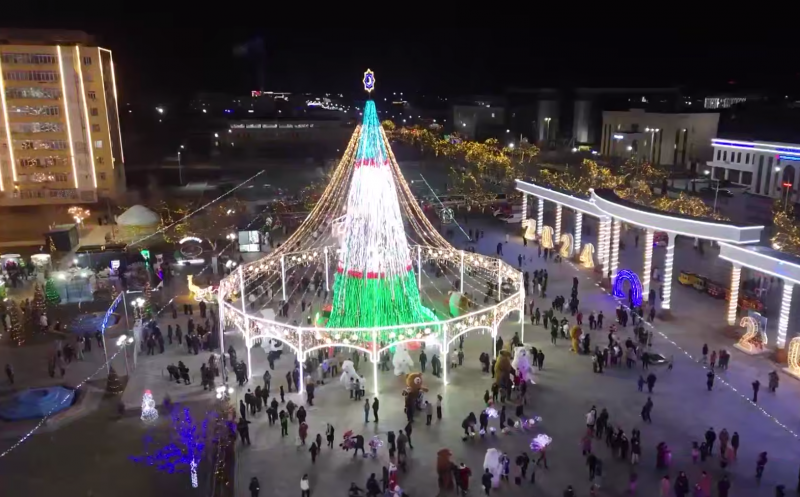
Other districts in Karakalpakstan also spent large amounts on Christmas tree decorations:
- Tortkol district: 49 million sums
- Khojaly district: 33 million sums
- Ellikkala district: 32 million sums
- Chimboy district: 28 million sums
- Khojayli district: 33 million sums
- Kungirot district: 16 million sums
In addition to these costs, district administrations distributed bonuses to their employees, ranging from 1% to 50% of their salaries, under the guise of the New Year celebration.
8. Khorezm Region
Khorezm region has kept its New Year expenses largely undisclosed. However, it is known that Hazorasp district alone allocated 25 million sums from the reserve fund of the local budget for New Year preparations and decorations. It is likely that other districts in Khorezm spent a similar amount, although precise figures are not available.
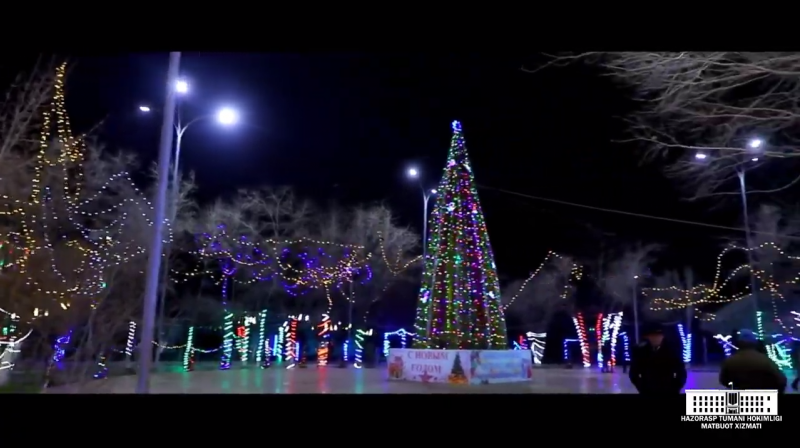
9. Namangan Region
In Yangikurgan district of Namangan, 79 million sums were spent on purchasing holiday gifts for socially vulnerable populations in the district. Details on other expenses or the effectiveness of gift distribution have not been disclosed, leaving uncertainty about the total New Year expenditure in Namangan.
10. Kashkadarya Region
The expenses related to the New Year in Kashkadarya region are similarly hidden. There is no information available about the total amount spent on the holiday, and it seems that Andijan region also followed a similar approach by not disclosing its figures.
11. Tashkent
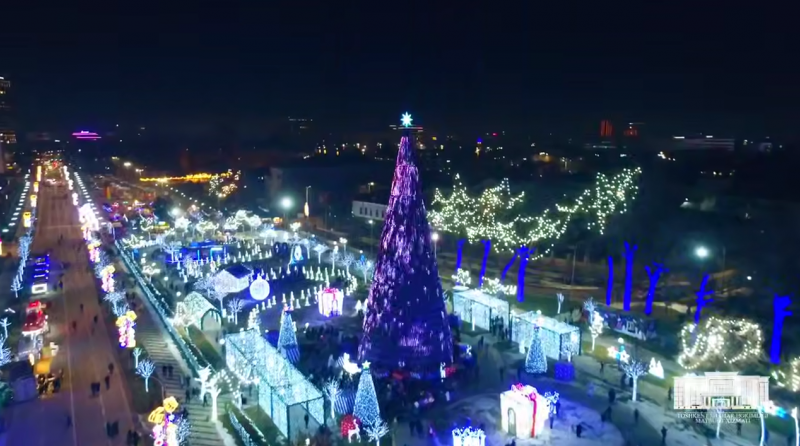
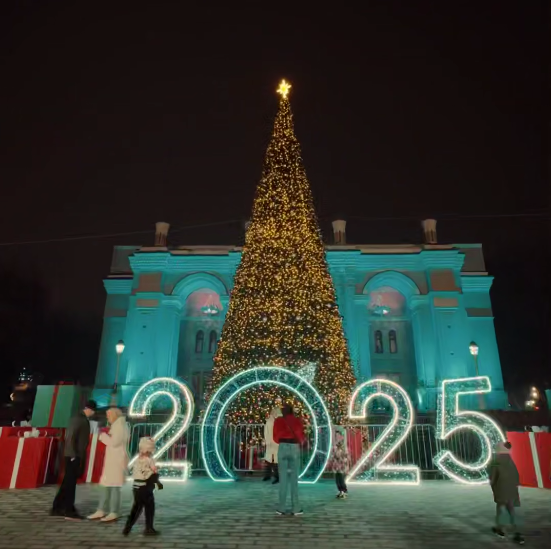
Tashkent, the capital, stands out for its complete lack of transparency in reporting New Year expenses. On the e-decision portal, documents detailing the city's New Year expenditures are marked as confidential or restricted due to personal information, guardianship, or other legal protections. The city's administration claims these documents are "limited information," making it difficult to assess how much was spent on the holiday celebrations in the capital.
12. Syrdarya Region
In Syrdarya region, several districts allocated funds for holiday incentives:
- Khavos district: 25 million sums
- Aqoltin district: 40 million sums
- Gulistan district: 53 million sums
- Mirzaabad district: 18 million sums
These funds were likely used for holiday-related decorations, gifts, and bonuses.
13. Tashkent Region
Tashkent region also allocated funds for New Year festivities. According to the Zangiota district mayor's resolution, 30 million sums were allocated from the district's reserve fund to cover the costs of repairing and decorating the New Year tree for a district holiday event.
Similarly, Chirchik city allocated 250 million sums from the local budget's reserve fund for the city’s New Year holiday expenses, including festive preparations.
The spending related to the 2025 New Year celebrations in Uzbekistan appears to have been extensive, with millions of sums allocated to various districts and cities across the country, especially for holiday-related bonuses, decorations, and festivities. The figures from Chirchik, Bostanlyk, Zangiota, Tashkent, and other regions reflect how state funds were used to reward officials, decorate Christmas trees, and fund festive events.
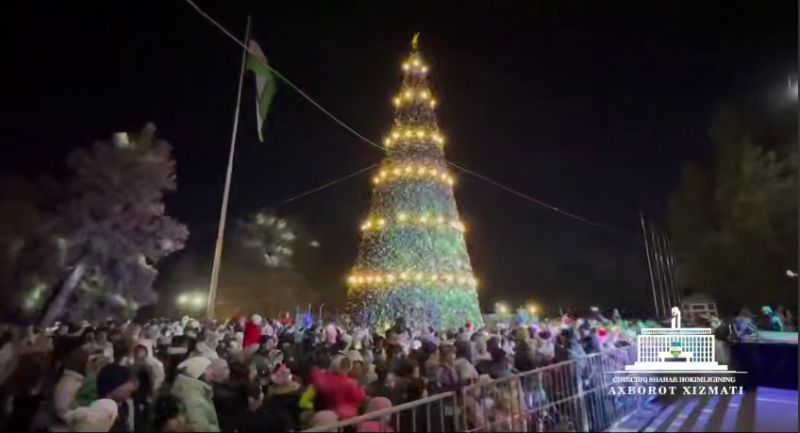
In total, 7 billion 169 million sums were spent from the state budget on the New Year celebrations, which is a significant amount—equivalent to the annual budget of a small district. However, this amount is likely to be even higher once the hidden expenses, especially in Tashkent, are accounted for.
The critique brought up by Alisher Kadyrov, chairman of the "Milliy Tiklanish" democratic party, points to a broader issue of wastefulness and inefficiency in the government’s spending habits. He warns against the tendency of officials to spend excessively, especially during the New Year holiday, while ordinary citizens face difficulties and economic challenges.
The question of accountability is raised, especially as it pertains to the local governments, which should be more transparent in reporting their holiday expenditures. Kadyrov’s criticism suggests that the public money spent on festivities could have been better allocated toward pressing issues, rather than being used to reward government officials or fund extravagant celebrations.
Ultimately, the public is left questioning the balance between cultural celebrations and fiscal responsibility, especially in light of the growing national debt and budget deficit. The continued lack of transparency and wasteful spending could fuel further public discontent and calls for greater accountability in how state funds are managed.
Live
All